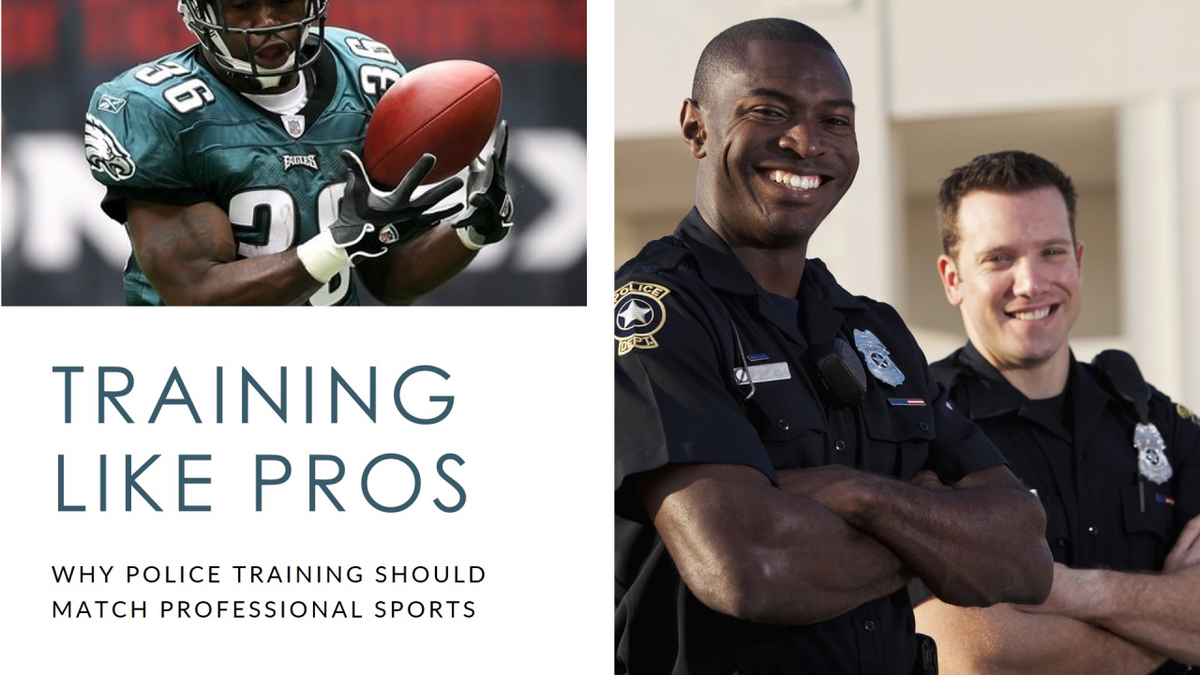The Real High-Stakes Arena: Why Police Training Should Match Professional Sports
The Real High-Stakes Arena: Why Police Training Should Match Professional Sports

The comparison between a police officer and a professional athlete may initially seem unusual, but it highlights a crucial issue. Both professions operate under intense public scrutiny and are expected to perform flawlessly. But here’s the difference: professional athletes train at a level that prepares them to avoid costly mistakes, while police officers are held to an even higher standard—one where a single error can mean life or death. Despite this, officers rarely receive anything close to the same level of preparation. The public expects officers to perform without error, to make flawless decisions under extreme stress, and to do so without the rigorous, specialized training resources available to elite athletes.
Consider the commitment to training that professional athletes receive. From the moment they enter their sport, athletes are immersed in an environment designed to produce peak performance. They spend countless hours each week—often multiple times a day—training their bodies and minds. Teams of coaches, sports psychologists, nutritionists, and trainers work around the clock to ensure that athletes perform at their best when it matters most. Every action is recorded, analyzed, and corrected to minimize the chance of error in game-day moments. Every play and maneuver is rehearsed until it becomes second nature.
Now, let’s look at law enforcement. After a short period at the police academy, where training is often more theoretical than practical, officers step onto the streets with far fewer resources or continued training. They might receive basic, yearly training sessions—often limited to legal updates or brief defensive tactics refreshers. For many departments, ongoing, high-level scenario-based training isn’t in the budget. Mental conditioning, a staple in athletic training, is largely absent, and most officers won’t experience anything even remotely similar to the dynamic, high-stress situations they encounter on the job until it’s happening in real time. They’re left to learn on the fly—often in situations where lives hang in the balance.
To make matters worse, much of the “training” provided to officers is computer-based, designed more to satisfy requirements than to prepare officers for real-life scenarios. Officers might click through slides or watch videos that, at best, offer passive information. Sitting in front of a computer screen is not training. Imagine preparing an athlete to perform by having them watch a video of someone else running drills. It would be laughable—yet this is the standard of 'training' many police officers receive. Real preparation demands immersive, scenario-based exercises that replicate the unpredictable nature of policing, not static, screen-based sessions.
Meanwhile, professional athletes, whose errors impact scores or individual records, receive ongoing, tailored training. They are given mental conditioning, real-time feedback, and consistent, intensive practice with highly trained professionals specializing in high-pressure performance. These resources prepare them to stay composed and make calculated decisions under stress, whether in front of thousands of fans or high-stakes competitions.
And yet, society expects these officers to be flawless. A single misjudgment can have life-altering consequences. If we hold officers to this level of perfection, shouldn’t we train them with the same intensity and precision? We wouldn’t send a surgeon into an operating room or a pilot into the cockpit with only basic training and expect flawless performance, especially under stress. We owe our officers and communities better preparation.
Another crucial difference is the nature of feedback in these professions. For athletes, every move is recorded, analyzed, and corrected by a team dedicated to refining their skills. They receive real-time, constructive feedback, ensuring each error becomes a learning moment. For police officers, however, feedback often arrives only after an incident has gone wrong. Discipline, review boards, and media scrutiny replace proactive coaching with little opportunity for constructive correction before they’re faced with life-altering decisions. Officers are left to make adjustments independently without structured guidance or support.
The stakes in policing are higher than in nearly any other field. For an athlete, a missed shot or dropped pass is a statistic, a footnote forgotten by the next game. For a police officer, one mistake can cost lives and permanently alter entire communities. This disconnect between expectations and preparation is unsustainable. If we want officers to succeed under the enormous pressures of their role, we must invest in them as we invest in other high-stakes professionals.
The power to create this change lies with lawmakers at every level—local, state, and federal. These decision-makers control the budgets, set the priorities, and are responsible for ensuring that officers receive the training they need to meet the expectations we place upon them. Until politicians commit to funding police training with the same dedication that professional sports and other high-stakes fields receive, nothing will change.
If we demand perfection, we must equip our officers with training that reflects the magnitude of their responsibility. Let’s give our officers the tools, support, and preparation they need—not only to keep themselves and our communities safe but to live up to the standards we hold them to. Real, lasting change requires real investment, which must start with those who have the power to make it happen. Lawmakers, it’s time to prioritize the safety of our officers and the public by ensuring that every officer is prepared for the reality of their role. The future of policing—and public safety—depends on it.

